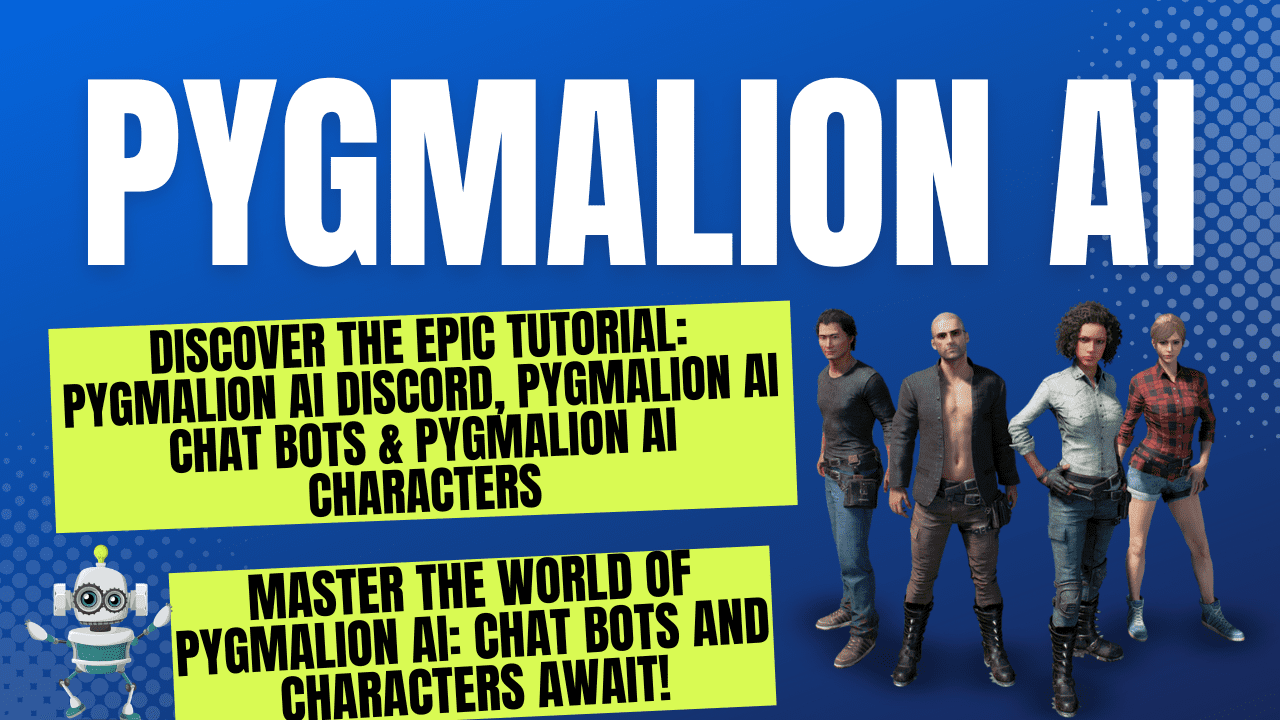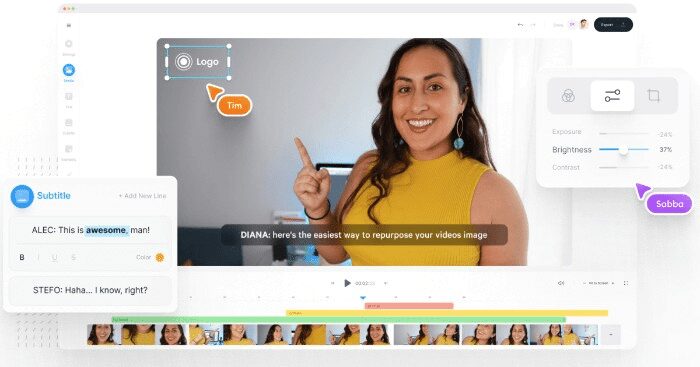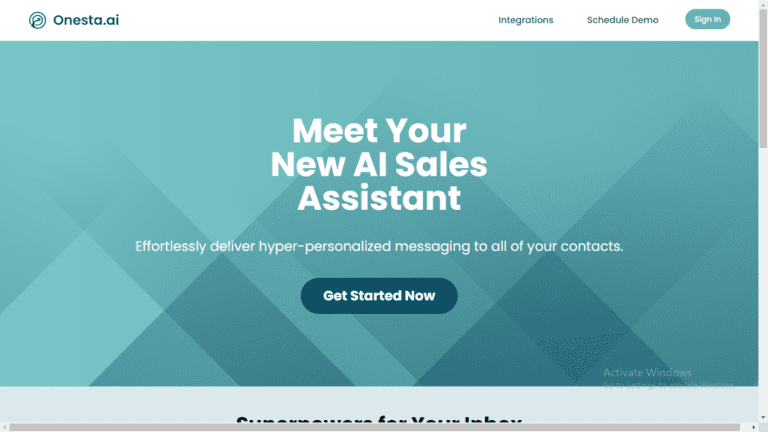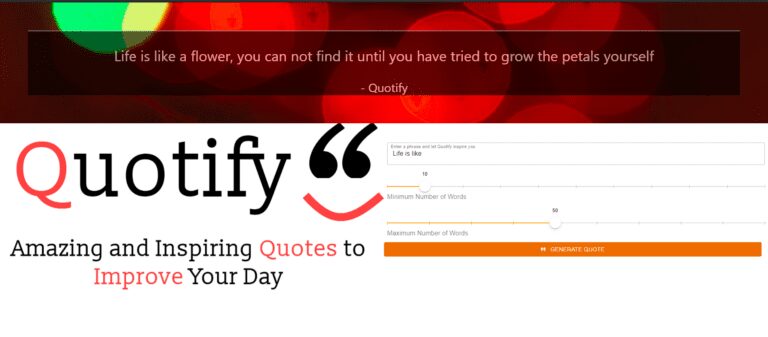Are you looking for How to Use Pygmalion AI?
Pygmalion AI, a sophisticated deep-learning platform, is becoming increasingly popular among machine-learning developers.
With the ability to quickly create personalized AI models tailored to particular tasks or datasets, Pygmalion has become one of the most trusted names in AI development.
In this blog post, we’ll cover some tips on using Pygmallion AI for your projects and understand why it’s so popular.
Table of Contents
What is Pygmalion AI

Pygmalion AI is an advanced large language model that leverages the power of Artificial Intelligence (AI) melded with state-of-the-art Natural Language Processing (NLP) technologies.
This synergy allows it to understand, interpret, and generate human-like text, enabling developers to design applications with remarkable capabilities in understanding and generating natural language.
By comprehensively learning from a diverse range of internet text, Pygmalion AI has been fine-tuned for various tasks, making it a versatile tool in the AI field.
What are the Benefits of Using Pygmallion AI?

Pygmalion AI offers numerous advantages that make it a go-to choice for developers.
Its deep learning algorithms allow for superior natural language comprehension, leading to more accurate results in tasks such as text generation, sentiment analysis, and language translation.
Secondly, Pygmalion AI’s ability to learn from a wide array of internet text makes it adaptable to different contexts, enhancing its versatility.
This tool isn’t just for tech giants; its user-friendly design caters to developers of all experience levels, making advanced AI capabilities accessible to startups and independent projects.
Lastly, Pygmalion AI consistently updates and refines its models, ensuring developers can always access the most cutting-edge AI technology.
How to Use Pygmalion AI – The Step-By-Step Process
Step 1 – Install Pygmalion AI
To kickstart your journey with Pygmalion AI, the first step is installation.
You can do this by running the command `pip install pygmalion-ai` in your Python environment. Ensuring your Python version is compatible with Pygmalion AI requirements is essential.
Once the installation is complete, you can verify it by typing `import pygmalion as pyg` in your Python interpreter.
If the library imports without any errors, you have successfully installed Pygmalion AI and are ready to proceed to the next steps.
Step 2 – Utilize Existing Character or Create a New One
Upon successful installation of Pygmalion AI, you can begin utilizing its various features. One of these includes leveraging the power of existing Characters.
In Pygmalion, a Character is a model trained for a specific task or context. To use an existing Character, start by importing it using the `pygmalion.
Character class. For example, if you wanted to use a Character designed for English language processing, you could do so with the following code: `english_character = pygmalion.
Character(‘English’)`. Once you’ve loaded your desired Character, you can start using its methods for various tasks, such as generating text or translating language.
Remember, each Character has its strengths and is better suited for specific tasks, so select your Character wisely based on your project’s needs.
Step 3 – Use API
Once you have selected or created a Character, the next step is to utilize Pygmalion AI’s powerful API to perform various tasks.
Pygmalion’s API consists of numerous methods for a specific function, such as generating text, translating language, or analyzing sentiment.
To use a method, call it on your Character object. For instance, if you want to generate English text, you can use the `generate_text` method: `english_character.generate_text(‘Hello, how are you?’)`. The output will continue the input text, generated in natural, human-like language.
Remember, the API’s capabilities are vast, so explore the documentation to maximize your Pygmalion AI experience.
As you familiarize yourself with the API and its methods, you can harness the full power of this advanced AI tool, bringing your applications to new levels of sophistication and capability.
How Does Pygmalion AI Work?
Pygmalion AI works by leveraging the power of machine learning and natural language processing.
At its core, Pygmalion AI uses a transformer-based model trained on a vast corpus of internet text. This extensive training allows the model to understand, interpret, and generate human-like text.
The model works by analyzing the structure and context of the input text and generating the most probable subsequent words or sentences.
It uses attention mechanisms to consider the relevance of each word in the context of the others, which allows it to maintain consistency and coherence in the generated text.
Furthermore, Pygmalion AI continually adapts and improves through machine learning, making it a powerful and versatile tool for developers across various applications.
What are the Features of Pygmalion AI
Open Source Model
One key feature that sets Pygmalion AI apart is its open-source model.
This means the codebase is freely available for developers to inspect, modify, and enhance according to their specific requirements.
Pygmalion AI’s open-source nature ensures transparency and promotes a collaborative environment where developers from around the globe contribute to the continuous improvement and evolution of the platform. Moreover, it enables developers to tailor custom solutions to solve unique problems.
Hence, the open-source feature of Pygmalion AI empowers developers with flexibility and control, encouraging innovation and fostering a global community of AI enthusiasts.
Updated Data
Another standout feature of Pygmalion AI is its commitment to staying current with the most updated data.
The models are regularly trained with diverse and recent internet text, ensuring that the AI understands and produces relevant and up-to-date language.
This feature is crucial for tasks that require awareness of the latest trends, slang, or significant cultural events.
It also means that Pygmalion AI’s output is continuously improving and becoming more sophisticated, mirroring the evolving nature of human language.
Hence, by working with updated data, Pygmalion AI is more capable of understanding the context and generating natural and human-like text.
Enhanced Interaction and Role Play
With Pygmalion AI, enhanced interaction and role play are made possible.
Its sophisticated models can simulate human conversation, making them excellent for creating interactive chatbots, virtual assistants, or role-playing games.
Each character can be programmed to simulate a specific persona, adding depth and variety to the interactions.
For instance, a character can be designed to sound like Shakespeare, an astronaut, or a medieval knight, making the interaction playful and engaging.
This feature opens many creative possibilities, making Pygmalion AI an ideal choice for projects that aim to engineer immersive and interactive experiences.
Analyzing Trends for Content Creation
Pygmalion AI is also a powerful tool for analyzing trends in content creation.
By leveraging the vast corpus of internet text it is trained on, Pygmalion AI can identify patterns and trends in language use, topic popularity, and content style.
This feature enables content creators to stay ahead of the curve and deliver content that resonates with current audiences.
For instance, if there’s a rising trend in using specific phrases or discussions around a particular topic, Pygmalion AI can help identify these trends, enabling content creators to tailor their work to reflect these shifts.
As a result, the analyzing trends for content creation feature allows Pygmalion AI to provide valuable insights into the ever-evolving content landscape, offering a competitive edge to content creators.
Helpful Tips for Using Pygmalion AI
- Select the Right Character: Pygmalion AI offers a variety of characters, each with unique strengths and specialties. Hence, always choose the character that aligns best with your project needs.
- Explore the API: The API is feature-rich and versatile. Explore its various methods to understand how they best serve your project’s requirements.
- Leverage the Open-Source Nature: Since Pygmalion AI is open-source, you can modify and tailor the code to fit your needs. Use this flexibility to your advantage.
- Stay Updated: Pygmalion AI’s models are continuously trained with the latest data. Regularly check for updates to ensure you use the most recent model.
- Experiment with Role Play: Pygmalion AI’s ability to simulate different personas can add depth and engagement to your projects. Don’t hesitate to get creative with this feature.
- Use Trend Analysis: Pygmalion AI can identify language and content trends. Use this feature to keep your content relevant and engaging.
- Use it as a Learning Tool: Pygmalion AI is a powerful AI tool, and working with it can significantly enhance your understanding of machine learning and natural language processing.
FAQs
Is My Data Safe on Pygmalion AI?
Yes, your data is safe with Pygmalion AI.
Pygmalion AI is designed with a strong emphasis on user privacy and data security. It adheres to stringent data protection protocols to ensure your information remains secure and private.
It does not store personal data provided through its API and employs advanced encryption methods for data in transit and at rest.
Please review the privacy policy for detailed information on how Pygmalion AI handles data.
Why is Pygmalion AI Popular?
Pygmalion AI is popular due to its advanced capabilities, flexibility, and user-friendly nature.
Its open-source model invites developers worldwide to contribute, ensuring continuous improvement.
Its models are trained on an extensive dataset, giving the AI an understanding of diverse and up-to-date language and making it relevant in various applications.
Its enhanced interaction and role-play feature allows for immersive experiences, appealing to various industries.
Moreover, its ability to analyze content trends offers invaluable insights, giving content creators a competitive edge.
Lastly, the strong emphasis on user privacy and data security reassures users of their data’s safety, further increasing its popularity.
Wrapping Up
Pygmalion AI sets a new standard in the AI landscape with its advanced features, flexibility, and commitment to user privacy.
Its ability to learn and evolve with the current trends, simulate human conversation, and analyze content trends makes it a potent tool for various applications.
As an open-source model, it invites continuous improvement and innovation from developers worldwide, further solidifying its position.
As a leader in natural language processing and machine learning.
Whether you want to enhance your content creation, develop immersive experiences, or gain insights into the latest trends, Pygmalion AI is an invaluable tool that can elevate your projects to new heights.





